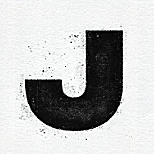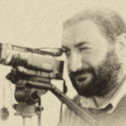
zkarj
-
Posts
58 -
Joined
-
Last visited
Reputation Activity
-
 zkarj got a reaction from Juhani in Affinity, we need clarification: are you or aren’t you working on a DAM?
zkarj got a reaction from Juhani in Affinity, we need clarification: are you or aren’t you working on a DAM?
Yes, it's pretty simple and intuitive, and it looks nice, too. A picture is worth a thousand words.
As you can see, nice coloured folders — not real folders, they are stored in a library (a macOS package it appears) — but you can export entire folders as raw content or a separate library. Where it says Design Assets at top left, that's where I can switch between libraries. My one other library is for scans of family history items.
Any file can be dragged out of Eagle into any other app as you would from Finder, and you can drag stuff in too.
You can see across the top the various types of automatic organisation available, and on the right is information for the currently selected file.
-
 zkarj got a reaction from Juhani in Affinity, we need clarification: are you or aren’t you working on a DAM?
zkarj got a reaction from Juhani in Affinity, we need clarification: are you or aren’t you working on a DAM?
I've given up wanting this. If something does materialise, I will certainly give it a look, but I find it increasingly unlikely anything produced under the Affinity brand will be for me.
I don't have a ton of assets that I need to store for Affinity products. I have two main use cases for an asset manager. First... my photos. I use Lightroom, and if Affinity can produce a DAM of equal quality, I will be very interested. I doubt they will, as they will, arguably should, focus on cross-domain asset management. I suspect you don't need a keyword hierarchy when managing graphical assets. I need it for my photos. Also, my photos very rarely go via any Affinity product.
Second is general graphic assets. I've purchased Eagle for this, and it works with anything, including Affinity products. It's only advance over Finder, for me, is a nicer interface that is built for assets, rather than just files.
I started out wanting to have an Affinity DAM because I didn't want to pay for Lightroom for just that task. Now I've made peace with that cost in my life.
So... too late for Affinity as far as I am concerned.
-
 zkarj reacted to thomaso in Shared content, smaller than a document
zkarj reacted to thomaso in Shared content, smaller than a document
Ah, I see. Pinning only causes the flow within the current, parent text frame, but does not change the pinned object, or its own flow or line breaks. Then, unfortunately, there is no option in Affinity yet. You can only either place as text, but unlinked – or place linked, but without it flowing itself.
-
 zkarj got a reaction from PaoloT in Markdown File Compatibility
zkarj got a reaction from PaoloT in Markdown File Compatibility
This would be a huge boost. Publisher is not a writing environment. As it stands, there does not seem to be a way to get even such simple stuff and emphasis into Publisher from an external source. Can't paste rich text, HTML, nor Markdown.
Markdown seems the obvious choice because it is intended for writing and it is surging in popularity. There will be some choices to be made over variants of Markdown but many software vendors have made their decisions and got on with it.
I'd settle for just headings, emphasis, lists, and links for starters.
-
 zkarj reacted to MEB in What did I do and how do I undo it? Adjustment layer has its own shape
zkarj reacted to MEB in What did I do and how do I undo it? Adjustment layer has its own shape
Hi zkarj,
The Noise Reduction Adjustment has a built-in mask applied - that's what the bounding box is marking/delimiting. Press and hold alt and click the adjustment thumbnail in the Layers panel to render it as a greyscale image so you can see it (the mask) - click somewhere else to return to the regular view. To remove/clear the mask go to the Channels panel (make sure adjustment layer is selected in the Layers panel), right-click the Noise Reduction Alpha channel and select Fill - to fill the mask with white. The bounding box will then disappear.
The Fill layer has two small circles: one on the top left and another on the bottom right that define the bounding box. You can fill the Fill layer the same way described above (or any other method) to clean it up/fill it with white (Fill layers also have built-in masks). Hide the bottom background layer temporarily (the plane image), zoom in on the bottom right corner of the bounding box of the fill layer and you should see one of them.
-
 zkarj got a reaction from danielschenk in Inserting images into table cells in Publisher
zkarj got a reaction from danielschenk in Inserting images into table cells in Publisher
I have been able to do the following steps:
Create a table. Place an image (which places it on the page, not in the table). Cut the image (Cmd-X). Click into a table cell to place the text cursor. Paste the image (Cmd-V). After these steps the image appears to be embedded in the table cell and adheres to horizontal and vertical positioning applied to that table cell.
That's good to see, but how can I place the image directly into a table cell? The above workflow is cumbersome when doing a lot of these.
-
 zkarj got a reaction from tallrob in Affinity, we need clarification: are you or aren’t you working on a DAM?
zkarj got a reaction from tallrob in Affinity, we need clarification: are you or aren’t you working on a DAM?
Just been pointed to this thread.
The very simple reason I would like an Affinity DAM is because Serif have proven that they know how to build great software, and the same reason Adobe built Lightroom is a reason for Affinity to build a "darkroom" product. I'm sure there are photographers who use Photoshop to process RAW files, but I reckon an awful lot more use Lightroom because that's what it is designed to do. I believe both the Photoshop and Affinity Photo names are less than ideal. Both products are way, way more than photo-based tools, and because of this, they aren't well geared to a photographer's workflow. Indeed they shouldn't be.
In my past and/or current repertoire of "darkroom" applications are: Lightroom, Aperture, Luminar, PhotoLab, ON1, and Apple Photos. Aperture is no longer for this world, and without it nothing equals Lightroom when it comes to managing and processing photographs. Lightroom I now find boring, but it can't be beat as an all-rounder (subscription pricing aside).
Luminar is a capable processor with some interesting processing features (not including sky replacement) but its DAM is barely there. PhotoLab has fantastic RAW conversion, a good feature set, and its DAM is workable, but with some critical issues. It also has some severe performance issues. ON1 is a decent all-rounder, most closely matching up to Lightroom but not quite there just yet, and bettered in some areas by others in my list. Apple Photos ... not sure why I included it in the list to be honest, but it does have a DAM. Why? Because Apple recognise that photos need a place to live where you can find them again.
But... try putting a 100 MB, 24 megapixel, 16 bit, full colour TIFF scan of a 35mm slide into any of these applications and they struggle. Again, Lightroom is capable. Some of the others almost seize up. One of them actually crashed my computer. Put that same TIFF in Affinity Photo, whack a new pixel layer on for non-destructive workflow, and use the infill brush to remove hundreds of dust specks and it doesn't even break a sweat. And I can do it on my iPad with a Pencil, too! Affinity product performance is next level.
For an Affinity DAM, I would not be surprised to see jaw dropping performance with great workflow, and, of course, fantastic integration. Imagine Selecting "Place" in Publisher and having your DAM library as an option to pick the file - just like Apple do with Pages and Photos.
However, the current Affinity RAW conversion appears to be relatively basic. Elsewhere, I asked that Serif buy the technology developed by DxO for PhotoLab 3, because it does astounding things with RAW files. By profiling actual lenses on actual cameras they are able to bring out razor sharp images that no other product in my list, nor Affinity Photo, can do. Their noise reduction is the most impressive I've seen, too, because it de-noises the RAW data based on those same camera and lens profiles, not the decoded image like everyone else does. When it comes to clever coding, fantastic implementation, and next level performance, Affinity products have it in spades, but DxO put some leg work into working with the hardware that is providing the images and it shows. I don't expect Serif to go that far, but the results speak for themselves.
-
 zkarj got a reaction from garrettm30 in Applying paragraph style to text with existing character styles
zkarj got a reaction from garrettm30 in Applying paragraph style to text with existing character styles
Thanks @Gabe for acknowledgement of the bug, and @garrettm30 for the workaround, which I have replicated and can now use successfully!
-
 zkarj reacted to garrettm30 in Applying paragraph style to text with existing character styles
zkarj reacted to garrettm30 in Applying paragraph style to text with existing character styles
Here you go (see attachment). It does work, but you have to work around the bug you have mentioned (which I also reported, twice in fact).
To work around the bug, edit your Base text style by changing the Font family to [No Change], set the Font traits to [No Change], and then set Font family back to the font you want. Do the same for Body text. That is how I could fix your sample file.
Styles-fixed.afpub
-
 zkarj reacted to Gabe in Applying paragraph style to text with existing character styles
zkarj reacted to Gabe in Applying paragraph style to text with existing character styles
This issue has already been logged with our developers
-
 zkarj got a reaction from walt.farrell in Markdown File Compatibility
zkarj got a reaction from walt.farrell in Markdown File Compatibility
Goodness knows what I did before because I swear it didn't work when I tried it. But clearly it does now. Thanks.
-
 zkarj reacted to jksmollin in Markdown File Compatibility
zkarj reacted to jksmollin in Markdown File Compatibility
It seems as though Affinity Publisher does not support importing markdown files for text import. Can this be a feature when the software is released out of beta?
Thank you =)
-
 zkarj got a reaction from dexod in [Photo] Smart Objects & Mockup
zkarj got a reaction from dexod in [Photo] Smart Objects & Mockup
I'll weigh in here rather than open a new thread.
The Place ability is great but is lacking in two key ways what Photoshop's Smart Objects can do – at least for my purposes.
First, and this can be worked around currently, is that I cannot edit a Placed file unless it's an .aphoto file. This seems like a simple fix because opening a JPEG and choosing Save as... does the conversion and the resulting file can be placed and edited, so the functionality is all available, just not linked. In fact, Photoshop has the ability to "convert to smart object" any layer that is already in place – doing that would solve the problem AND the related problem of the Placement having to be in an external file to start with.
Second, duplicate by reference. The ability to load one "smart object" and have multiple copies each with their own scale and translation, layer effects, etc, but when you edit one, all copies are updated. This is really useful for logo work amongst other things.
-
 zkarj got a reaction from MattP in iOS icon design with Affinity Designer
zkarj got a reaction from MattP in iOS icon design with Affinity Designer
I've been watching lots of tutorials and playing around with Designer to get used to it. When I got to the video on Symbols in Designer 1.5, this concept leapt to mind, and so I made it.
It makes use of Symbols, Artboards and the power of the Export Persona to simplify outputting all the required sizes for an iOS application icon. And of course designing the artwork in the first place is easy and fun with all the Designer tools at your disposal.
This blog post explains how to use it and contains the download link.




